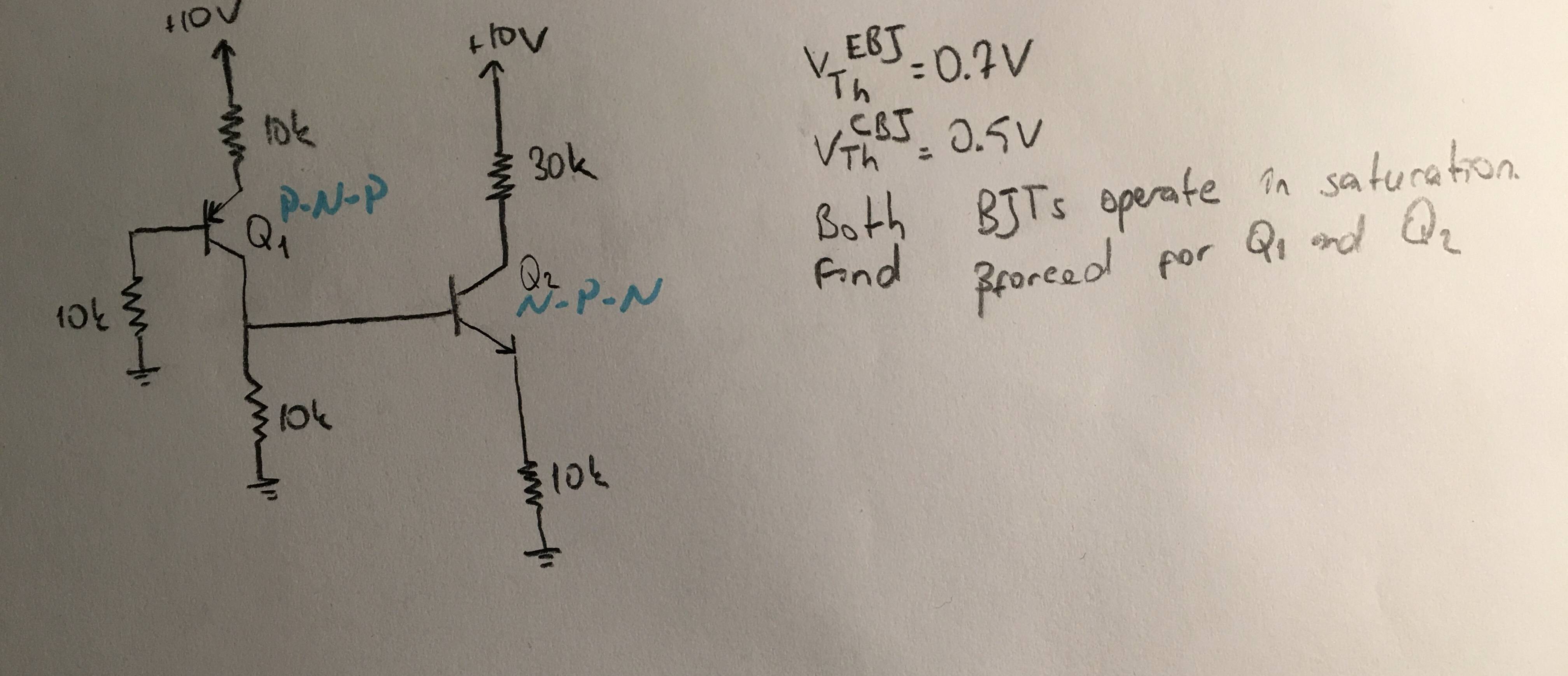but I cannot still find the currents properly
All currents can be found by solving a system of 4 equations.
We already know that \$\mathrm{|V_{CE}|=0.2V}\$ and \$I_E=I_B+I_C\$ for both NPN and PNP transistors.
Here are all the equations:
Equation-1 (from Vcc to PNP's emitter to base to ground):
$$
\mathrm{
10V=10k \ I_{E1}+0.7V+10k \ I_{B1} \\ \therefore 9.3V=10k\ (2\ I_{B1}+I_{C1}) \ \ \ \ ... (1)
}
$$
Equation-2 (From Vcc to PNP's emitter to collector to ground):
$$
\mathrm{
10V=10k\ I_{E1}+V_{EC-pnp}+10k\ (I_{C1}-I_{B2}) \\ \therefore 9.8V=10k\ (2\ I_{C1}+I_{B1}-I_{B2})
}
$$
Equation-3 (From PNP's collector to ground and from NPN's base to emitter to ground):
$$
\mathrm{
10k\ (I_{C1}-I_{B2}) = V_{BE-npn} + 10k\ I_{E2} \\ \therefore 10k\ (I_{C1}+I_{C2}-2I_{B2})=0.7V
}
$$
Equation-4 (From Vcc to NPN's collector to emitter to ground):
$$
\mathrm{
10V=30k\ I_{C2}+V_{CE-npn}+10k\ I_{E2} \\ \therefore 9.8V=10k\ (4\ I_{C2}+I_{B2})
}
$$
There are 4 unknowns and 4 equations. If you solve this 4-eq system via matrices (preferably) or replacements (too difficult), you'll find;
\$\mathrm{I_{B1}\approx0.285mA}\$
\$\mathrm{I_{B2}\approx0.026mA}\$
\$\mathrm{I_{C1}\approx0.360mA}\$
\$\mathrm{I_{C2}\approx0.238mA}\$
Don't forget to crosscheck.



